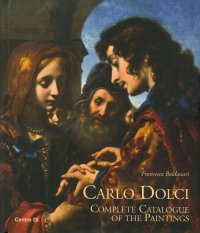Nicola Grassi (1682-1748)
Treviso, 2019; hardback, pp. 532, b/w and col. ill., b/w and col. plates, cm 24x30.
cover price: € 90.00
|
Books included in the offer:
Nicola Grassi (1682-1748)
Treviso, 2019; hardback, pp. 532, b/w and col. ill., b/w and col. plates, cm 24x30.
FREE (cover price: € 90.00)
Carlo Dolci. Complete Catalogue of the Paintings
English Text.
Firenze, 2015; paperback, pp. 392, 100 b/w ill., 186 col. ill., cm 24,5x28,5.
FREE (cover price: € 150.00)
Trento. An art city in the Alps. History and art guide
Degasperi Fiorenzo
Curcu & Genovese
Trento, 2013; paperback, pp. 156, col. ill., cm 20x25.
series: History and art guide
ISBN: 88-6876-015-0 - EAN13: 9788868760151
Subject: Travel's Culture
Places: Trentino Alto Adige
Languages: 
Weight: 0.62 kg
Perhaps this is why, even in its more modern parts, Trento remains a quiet, very relaxing, people-friendly city. Strolling along its streets the human soul is able to find its own historic, chronological and artistic dimensions. The imagination provides a fourth dimension as walking helps us to learn about the "hidden" city, the one that lies beneath the one we can actually see and touch. Page after page this guidebook provides a brief insight into the past, present and future courses of history. These stones and our dreams are able to reveal events, whether real or virtual, that took place in the past, with the words and city playing a role in interpreting each other. These exchanges between words and the city are essentially metaphors, a prime example of which would be that the world is a book. Seen in this perspective, the city can be read like a book or map. For this reason the text and photographs are presented in the form of a fast-paced dialogue, allowing the places, objects and people that inhabited these houses, mansions, churches and castle to parade before the readers' eyes and are thereby saved from falling into oblivion. I think the important issue here is how should we go about discovering the city. Should we study it from a chronological perspective?
If this is the method we choose, then this guidebook will help us put the visible world in order, whilst leaving to us the choice of how to organise our tour. Or should we just wander around the city and absorb the sensations and impressions it offers? In this case we would use an old popular method of getting to know something by using all five senses, to experience the city "organically".










